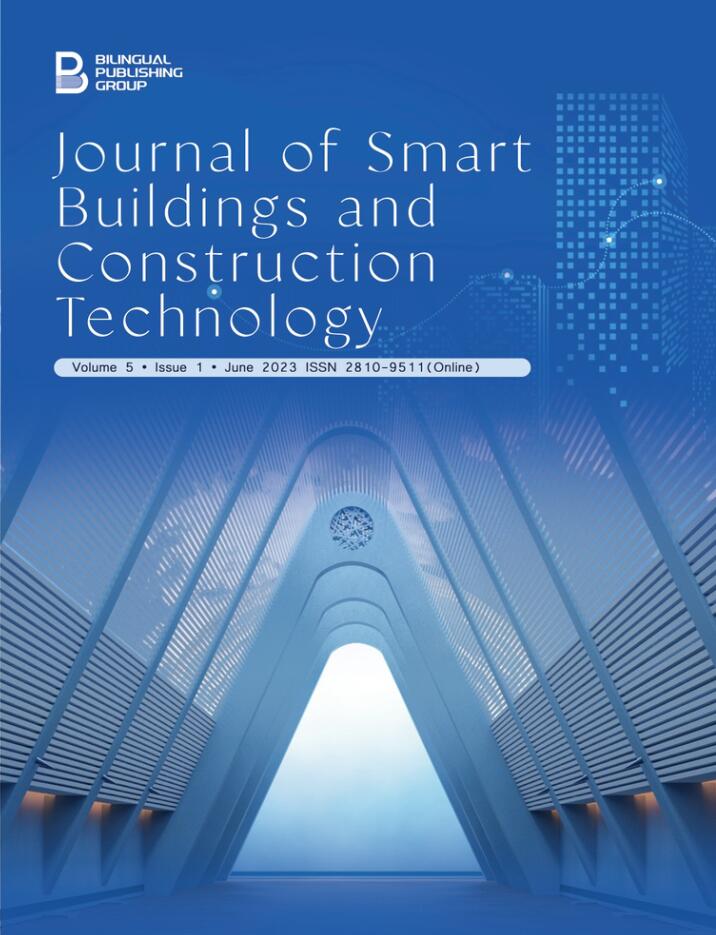-
164
-
157
-
147
-
122
-
91
Enhancing Concrete Properties Using Silica Fume: Optimized Mix Design
DOI:
https://doi.org/10.30564/jsbct.v5i1.5678Abstract
In the current work, concrete mixes containing (7.0-33.11) weight % silica fume as a partial replacement of cement with a water /cement ratio (0.42-0.48) were prepared according to an adopted two factorial central composite design. The samples were tested, optimized, and modeled for compressive strength and density. The estimated results confirmed that compressive strength and density increase with increasing silica fume content up to 11.9 wt.%. Response surface analysis results confirmed that silica fume concrete with developed compressive strength (53.42 MPa) could be prepared by incorporation of 11.9 wt. % silica fume as partial replacement of cement using 0.42 water/cement ratio. An increase in compressive strength and density (up to 39.3% and 2.6% ) respectively was recorded for silica fume concrete mixes compared to Portland cement concrete. Overall, the research findings revealed that silica fume concretes prepared with appropriate silica fume content and water/cement ratio exhibited superior strength and density characteristics candidate them to be used effectively in civil engineering applications.
Keywords:
Silica fume; Silica fume-cement concrete; Response Surface Methodology; Density; Compressive strength; Optimization; ModelingReferences
[1] Mehta, A., Ashish, D.K., 2020. Silica fume and waste glass in cement concrete production: A review. Journal of Building Engineering. 29, 100888. DOI: https://doi.org/10.1016/j.jobe.2019.100888
[2] Sahoo, S., Parhi, P.K., Panda, B.C., 2021. Durability properties of concrete with silica fume and rice husk ash. Cleaner Engineering and Technology. 2, 100067.DOI: https://doi.org/10.1016/j.clet.2021.100067
[3] Zaw, O., 2019. Effect of silica fume on the properties of concrete. International Journal of Engineering Research and Advanced Technology. 5(8), 55-59. DOI: https://doi.org/10.31695/ijerat.2019.3557
[4] Luo, T., Hua, C., Liu, F., et al., 2022. Effect of adding solid waste silica fume as a cement paste replacement on the properties of fresh and hardened concrete. Case Studies in Construction Materials. 16, e01048.
[5] Liao, W., Sun, X., Kumar, A., et al., 2019. Hydration of binary portland cement blends containing silica fume: A decoupling method to estimate degrees of hydration and pozzolanic reaction. Frontiers in Materials. 6, 78.
[6] Saraswathy, V., Karthick, S.P., 2013. A stateof-the-art review on the durability of silica fume-blended concrete—A boon to the construction industry. Corrosion Reviews. 31(3-6), 123-134.DOI: https://doi.org/10.1515/corrrev-2013-0017
[7] Jagan, S., Neelakantan, T.R., 2021. Effect of silica fume on the hardened and durability properties of concrete. International Review of Applied Sciences and Engineering. 12(1), 44-49.DOI: https://doi.org/10.1556/1848.2020.00129
[8] Kumar, R., Dhaka, E.J., 2016. Partial replacement of cement with silica fume and its effects on concrete properties. International Journal for Technological Research in Engineering. 4(1), 86-88.
[9] Bashir, A., Gul, M., Naqash, J.A., et al., 2015. Study of permeability and compressive strength of silica fume concrete. International Journal of Engineering and Advanced Technology (IJEAT). 4, 238-242.
[10] Selvapriya, R., 2019. Silica fume as partial replacement of cement in concrete. International Research Journal of Multidisciplinary Technovation (IRJMT). 1(6).DOI: https://doi.org/10.34256/irjmtcon43
[11] Suleman D.A., Mohammed M.K., Mansoor Y.A., 2021. Optimization of different properties of ultra-high performance concrete mixes for strengthening purposes. Iraqi Journal of Civil Engineering. 15(2), 72-85.
[12] Myers, R.H., Montgomery, D.C., Anderson-Cook, C.M., 2016. Response surface methodology: process and product optimization using designed experiments. John Wiley & Sons: Hoboken.
[13] Sahoo, K.K., Sarkar, P., Davis, R., 2019. Mechanical properties of silica fume concrete designed as per construction practice. Proceedings of the Institution of Civil Engineers-Construction Materials. 172(1), 20-28.
[14] Srivastava, V., Kumar, R., Agarwal, V.C., et al., 2014. Effect of silica fume on workability and compressive strength of OPC concrete. Journal of Environmental Nanotechnology. 3(2), 32-35. DOI: https://doi.org/10.13074/jent.2014.09.143086
[15] Cong, X., Gongm, S., Darwin, D., et al., 1990. Role of Silica Fume in Compressive Strength of Cement Paste, Mortar, and Concrete [Internet]. A report on research sponsored by the university of Kansas structural engineering & materials laboratory university of Kansas lawrence, Kansas. Available from: https://citeseerx.ist.psu.edu/viewdoc/download;jsessionid=450D-7CD3625F06BB92260CD3273C259F?-doi=10.1.1.691.1978&rep=rep1&type=pdf
[16] Nafees, A., Javed, M.F., Khan, S., et al., 2021. Predictive modeling of mechanical properties of silica fume-based green concrete using artificial intelligence approaches: MLPNN, ANFIS, and GEP. Materials. 14(24), 7531.DOI: https://doi.org/10.3390/ma14247531
[17] Behnood, A., Golafshani, E.M., 2018. Predicting the compressive strength of silica fume concrete using hybrid artificial neural network with multi-objective grey wolves. Journal of Cleaner Production. 202, 54-64.
[18] Myers, R.H., Montgomery, D.C., 2002. Response surface methodology, 2nd edition. Wiley: Hoboken.
[19] Rodrigues, A.C., 2021. Response surface analysis: A tutorial for examining linear and curvilinear effects. Revista de Administração Contemporânea. 25(6), e200293.
[20] Srivastava, V., Agarwal, V.C., Kumar, R., 2012. Effect of Silica fume on mechanical properties of Concrete. Journal of Academia and Industrial Research. 1(4), 176-179.
[21] Imam, A., Kumar, V., Srivastava, V., 2018. Review study towards effect of Silica Fume on the fresh and hardened properties of concrete. Advances in Concrete Construction. 6(2), 145.
[22] Abed, A.A., Kamal, I.M., 2021. Factorial design for studying the properties of recycled aggregate concrete exposed to aggressive media. Journal of Engineering Research. 9(ICRIE).
[23] Ahmed, S.M., Kamal, I., 2022. Electrical resistivity and compressive strength of cement mortar based on green magnetite nanoparticles and wastes from steel industry. Case Studies in Construction Materials. 17, e01712.
[24] Scrivener, K.L., 2004. Backscattered electron imaging of cementitious microstructures: understanding and quantification. Cement and Concrete Composites. 26(8), 935-945.DOI: https://doi.org/10.1016/j.cemconcomp.2004.02.029
[25] Uzbas, B., Aydin, A.C., 2020. Microstructural analysis of silica fume concrete with scanning electron microscopy and X-ray diffraction. Engineering, Technology & Applied Science Research. 10(3), 5845-5850.
Downloads
How to Cite
Issue
Article Type
License
Copyright © 2023 Ammar Ali, Ibtisam Kamal, Alireza Mojtahed

This is an open access article under the Creative Commons Attribution-NonCommercial 4.0 International (CC BY-NC 4.0) License.




 Ammar Ali Abed
Ammar Ali Abed





